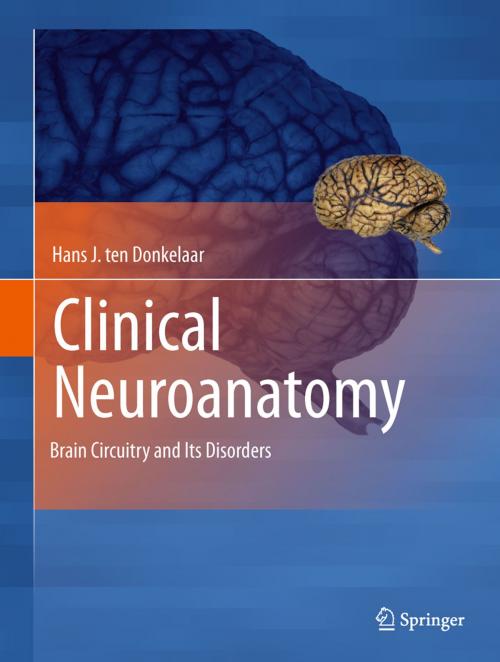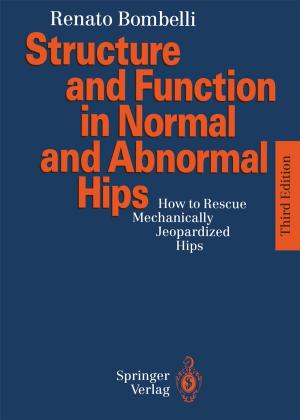Clinical Neuroanatomy
Brain Circuitry and Its Disorders
Nonfiction, Health & Well Being, Medical, Specialties, Internal Medicine, Neuroscience, Neurology, Science & Nature, Science| Author: | Hans J. ten Donkelaar | ISBN: | 9783642191343 |
| Publisher: | Springer Berlin Heidelberg | Publication: | June 21, 2011 |
| Imprint: | Springer | Language: | English |
| Author: | Hans J. ten Donkelaar |
| ISBN: | 9783642191343 |
| Publisher: | Springer Berlin Heidelberg |
| Publication: | June 21, 2011 |
| Imprint: | Springer |
| Language: | English |
Connections define the functions of neurons: information flows along connections, as well as growth factors and viruses, and even neuronal death may progress through connections. Knowledge of how the various parts of the brain are interconnected to form functional systems is a prerequisite for the proper understanding of data from all fields in the neurosciences.
Clinical Neuroanatomy: Brain Circuitry and Its Disordersbridges the gap between neuroanatomy and clinical neurology. It emphasizes human and primate data in the context of disorders of brain circuitry which are so common in neurological practice. In addition, numerous clinical cases demonstrate how normal brain circuitry may be interrupted and to what effect. Following an introduction into the organization and vascularisation of the human brain and the techniques to study brain circuitry, the main neurofunctional systems are discussed, including the somatosensory, auditory, visual, motor, autonomic and limbic systems, the cerebral cortex and complex cerebral functions.
Connections define the functions of neurons: information flows along connections, as well as growth factors and viruses, and even neuronal death may progress through connections. Knowledge of how the various parts of the brain are interconnected to form functional systems is a prerequisite for the proper understanding of data from all fields in the neurosciences.
Clinical Neuroanatomy: Brain Circuitry and Its Disordersbridges the gap between neuroanatomy and clinical neurology. It emphasizes human and primate data in the context of disorders of brain circuitry which are so common in neurological practice. In addition, numerous clinical cases demonstrate how normal brain circuitry may be interrupted and to what effect. Following an introduction into the organization and vascularisation of the human brain and the techniques to study brain circuitry, the main neurofunctional systems are discussed, including the somatosensory, auditory, visual, motor, autonomic and limbic systems, the cerebral cortex and complex cerebral functions.















